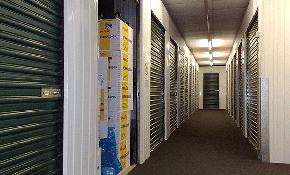For commercial mortgage backed securities (CMBS) lenders and borrowers alike, the environmental due diligence process is often little more than a formality. The best case scenario is that the Phase 1 Environmental Site Assessment (Phase 1 ESA) is completed, no environmental issues or recognized environmental conditions are identified, and the Phase I becomes just another document in the underwriting file. The other potential outcome is one that elevates the environmental due diligence process from file-filler to potential deal-killer.
A Phase 1 ESA that contains a recommendation for a Phase 2 Environmental Subsurface Investigation can be a major roadblock to closing a loan. Luckily there are two new documents that provide specific guidance on how environmental risk can be quantified and dealt with during a CMBS deal so as not to impede the issuance of the loan.
CREFC Guidance for CMBS
The Commercial Real Estate Finance Council (CREFC) has recently issued two guidance documents for the underwriting of commercial real estate loans that are originated with the intention of being packaged and sold as CMBS. These documents are:
- CREFC – Principles-Based Underwriting Framework (December 2010); and
- CREFC – Model Representations and Warranties (March 2011).
Although they are separate documents generated for separate purposes, they both provide specific guidance regarding environmental issues and conditions, specifically options outside of a Phase 2 Subsurface Investigation.
The Underwriting Framework document serves to encapsulate CREFC’s views and suggestions on conformance with Section 941 of the Dodd-Frank Wall Street Reform and Consumer Protection Act. Specifically, the Dodd-Frank Act directs federal banking agency regulators to craft underwriting standards “that specify the terms, conditions and characteristics of a loan within the asset class that indicate a low credit risk with respect to that loan.”
The Model Reps and Warranties document generally serves to provide an industry standard that will conform with Section 943 of the Dodd-Frank Act and the new SEC Exchange Act Rule 17g-7 which require that credit rating agencies (CRAs) include in any ratings report descriptions of the representations, warranties, and enforcement mechanisms available to investors in the offering as well as a comparison to the representations, warranties, and enforcement mechanisms in “similar issuances.”
Guidance for CMBS on Environmental Concerns
The specific sections of these documents that outline how environmental issues are to be handled are abstracted below.
CREFC – Principles-Based Underwriting Framework – Environmental Related Expenses
An underwriter must engage a qualified environmental engineer to prepare a Phase 1 environmental assessment as defined by the American Society of Testing Materials (ASTM) E1527 – 05. If issues of environmental concern are identified by the Phase 1 consultant, an underwriter may:
- Require additional investigation in the form of a Phase 2 Assessment as defined by ASTM E1903-11;
- Require that the issues identified be remediated prior to or subsequent to loan closing (the underwriter generally requires the establishment at closing of an environmental escrow to cover the costs of any post-closing remediation);
- Require that the borrower implement an operations and maintenance (O&M) program (in the case of properties with manageable asbestos or lead-based paint);
- Implement an environmental insurance policy; or
- Withdraw or reduce the amount of the proposed financing.
The offering documentation should detail the amount of any upfront or ongoing reserves required for environmental remediation.
CREFC – Model Representations and Warranties – Environmental Conditions
If a material noncompliance with environmental laws or the existence of a recognized environmental condition is indicated in the Phase 1, then in order for the loan to comply with the Model Reps and Warranties document one of the following statements must be true:
- 125% of the funds reasonably estimated by a reputable environmental consultant to be sufficient to cover the estimated cost to cure any material noncompliance with applicable environmental laws or the environmental condition has been escrowed by the related mortgagor and is held by the related lender;
- If the only environmental condition relates to the presence of asbestos-containing materials and the Phase 1 only recommends the implementation of an O&M Plan then such a plan has been implemented by the mortgagor;
- The environmental condition identified in the Phase 1 has been remediated or abated and a no further action or closure letter has been obtained from the applicable governmental regulatory authority;
- An environmental policy or a lender’s pollution legal liability insurance policy that covers the liability for the identified circumstance or condition was obtained from an issuer rated now less than A- (or equivalent) by Moody’s, S&P and/or Fitch [there is an entire paragraph that outlines the specific requirements that the insurance policy must meet];
- A party not related to the mortgagor was identified as the responsible party for such condition or circumstance and the loan seller has reasonably estimated that the responsible party has financial resources adequate to address the situation; or
- A party related to the mortgagor having financial resources reasonably estimated to be adequate to address the situation is required to take action.
The remedies outlined by these documents do not represent a magic bullet that remove the environmental issues identified with the Phase 1 Environmental Site Assessment. But what the remedies do provide are options beyond the stigma and delay often associated with a Phase 2 Subsurface Investigation. Assuming formal regulatory closure of the issue has not been achieved, two realistic options exist in the form of an escrow consisting of 125% of the estimated cost to cure the issue and environmental insurance sufficient to cover any potential loss are available.
In order to effectively manage client expectations, all parties associated with a CMBS transaction from loan originator to consultant should understand the options available to deal with environmental conditions and ensure that any client or borrower is fully aware of these options. Once an environmental issue or condition is identified, the resolution will ultimately be a business decision on the part of the lender or the borrower or both. Familiarity with all of the options available under the CREFC guidelines will aid all parties in making the best business decision and could be the difference between you and your competition.

















 Copyright © 2024 ALM Global, LLC. All Rights Reserved.
Copyright © 2024 ALM Global, LLC. All Rights Reserved.